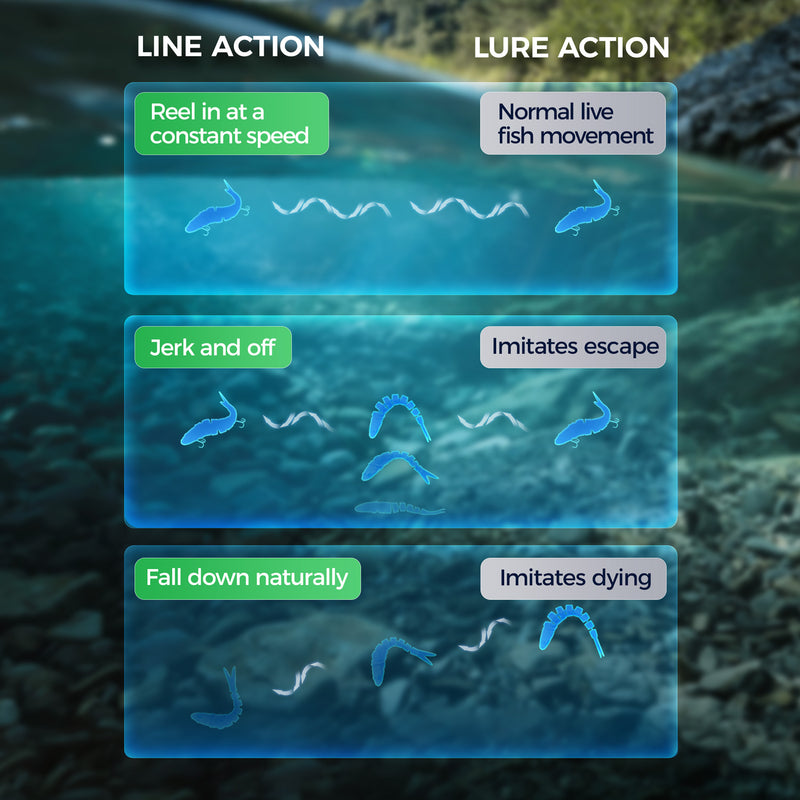Unlock the Secrets of Wooden Fishing Lures: Transform Your Catching Game Today!
Wooden fishing lures have a rich history that dates back to the early days of fishing. Crafted by hand, these lures not only reflect the craftsmanship of their makers but also embody the essence of traditional fishing techniques. Many anglers swear by wooden lures for their ability to mimic the natural movement of baitfish, making them a staple in any fishing tackle box. In this article, we will explore the various types of wooden fishing lures, their unique benefits, and practical tips on how to use them effectively to improve your fishing success.

Types of Wooden Fishing Lures
Wooden fishing lures come in several varieties, each designed for specific fishing scenarios and environments. Understanding these lures can significantly enhance your fishing strategy. The most common types include crankbaits, topwater lures, and jerkbaits, each with distinct characteristics and uses. Crankbaits are known for their diving action, making them effective in deeper waters. Topwater lures create surface commotion, ideal for enticing fish in shallow streams or ponds. Jerkbaits are versatile and can be used in various conditions, offering a unique action that attracts predatory fish. Knowing when and how to use each type can make a substantial difference in your catch rate.
Crankbaits
Crankbaits are designed to mimic the swimming motion of baitfish. Their unique shape allows them to dive to different depths depending on their design. These lures are typically equipped with a bill that controls their depth and action. When retrieved, crankbaits create vibrations and movements that trigger the predatory instincts of fish. They are particularly effective in waters where fish are feeding near the bottom or in mid-water columns. I remember a trip with a friend who swore by crankbaits. After a few casts, he landed a hefty bass that couldn’t resist the lure’s realistic imitation of a distressed fish.
Topwater Lures
Topwater lures are designed to float on the surface of the water, creating ripples and splashes that mimic struggling prey. This type of lure is particularly effective during early morning or late evening when fish are actively feeding near the surface. The excitement of catching a fish on a topwater lure is unmatched, as the strike often occurs right before your eyes. During a fishing outing last summer, I experienced a thrilling moment when a large pike struck my topwater lure, creating a spectacular splash that left my heart racing.
Jerkbaits
Jerkbaits are versatile lures that can be used in both shallow and deep water. Their unique action, which involves a series of sharp jerks followed by pauses, mimics the erratic movement of injured fish. This unpredictable motion makes them highly effective in attracting predatory species. To maximize their effectiveness, anglers often experiment with different retrieval speeds and pauses. I recall a fishing trip where a friend introduced me to the jerkbait technique. By varying my retrieval speed, I was able to entice several species that I had previously struggled to catch.
Benefits of Using Wooden Fishing Lures
Wooden fishing lures offer several advantages over synthetic options. One of the most notable benefits is their durability; high-quality wooden lures can withstand the wear and tear of repeated use, making them a long-term investment. Additionally, wooden lures have a unique buoyancy and movement in the water that synthetic lures often lack. They can create a more natural look and feel, which is crucial for attracting fish that may be wary of artificial bait. Furthermore, many anglers appreciate the craftsmanship and artistry of wooden lures, adding a personal touch to their fishing experience. The weight and density of wood can also enhance the depth at which the lure operates, giving anglers more options when targeting different species.
Effective Techniques for Using Wooden Fishing Lures
To maximize the effectiveness of wooden fishing lures, it’s essential to consider several techniques. First, match the lure type with the species you are targeting; different fish respond better to specific lure actions and colors. Experimenting with retrieval speeds can also make a significant difference; sometimes a slow, steady retrieve is more effective, while other times a quick, erratic motion can trigger a strike. Timing is crucial as well—fish are often more active during dawn and dusk, making these prime times for using wooden lures. Additionally, pay attention to the water conditions; using topwater lures on calm days can yield fantastic results, while crankbaits may be better suited for windy days when fish are less likely to be at the surface. Lastly, always be aware of your surroundings and adjust your technique based on the environment; fishing in heavy cover may require a different approach than fishing in open water.
Enhancing Your Fishing Experience with Wooden Lures
Wooden fishing lures are not just tools; they are a bridge between the angler and the aquatic world. By understanding the different types of wooden lures, recognizing their benefits, and employing effective usage techniques, you can significantly enhance your fishing experience. I encourage you to explore various lures and techniques, as each fishing trip offers unique opportunities to learn and grow as an angler. The next time you're out on the water, consider reaching for a wooden lure and see how it transforms your catching game!








